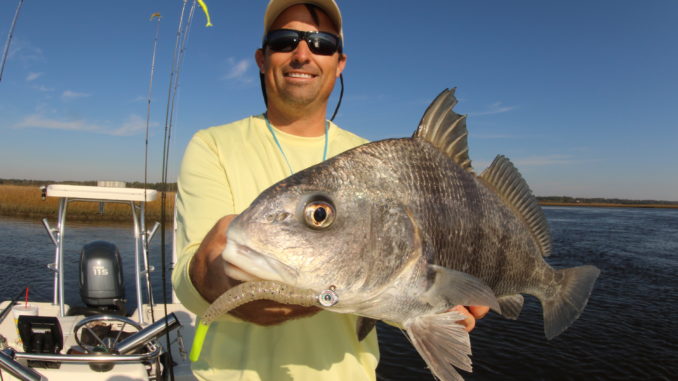
Cold weather brings out best in Lowcountry drum
Most black drum caught inshore are taken by anglers targeting redfish, speckled trout or flounder, but if you want to catch a black drum on purpose, December is a great month for it.
Daryl Johnston of Walterboro, S.C., said catching black drum this month is about as easy as it gets, but he said you’ve got to target them very specifically to catch them with any regularity.
“When it’s cold, you can catch them pretty consistently in the deepest holes in inshore creeks. I catch most of mine in lesser-known areas of the Lowcountry like Rantowles Creek and Wimbee Creek, but I’ve caught them all up and down the coast. The key is finding the deepest holes in whatever creek you’re fishing,” said Johnston, who prefers whatever live bait he can find but said blacks will take artificial lures, too.
“I really started catching black drum by accident on Z-Man Trout Tricks one day a few years ago, but that day, I really learned a lot about targeting these fish. I was sight-fishing schools of redfish, and once a school would break up, I would just blind cast to deep holes that I’d find with my side-imaging depth finder. I caught more black drum that day than I ever had before,” he said.
The best places to cast for a black drum is where structure meets a deep hole, Johnston said.
“If there is a downed tree or a wooden sea wall next to a deep hole, I expect to catch a black drum there this time of year. These fish will be tight to that structure. If I catch a redfish, then I know I’m not casting close enough to the structure. If I make it my goal to hook the wooden structure, I will catch black drum,” he said.
When using live bait, Johnston ties on a Carolina rig with a leader about 6 inches long. He uses as light a weight as he can, according to the current, and once he makes a cast, he lets the bait swim around without any help from him. It’s a little trickier when he’s using artificials.
“I’ll cast in there, let the lure sink, and once it sits there about a minute, I’ll just jiggle my rod tip. I’m not trying to move the lure away; I’m just trying to make the lure vibrate and sit in the same spot. I’ll do that about a minute, then slowly crawl the lure back to the boat,” he said.

